Finite Element Analysis of Steel Plates with Rectangular Openings Subjected to Axial Stress
Abstract
:1. Introduction
1.1. Literature Review
1.2. Importance of the Research
2. Theoretical Background
Analytical Method of Determining Stress and Displacement of Unperforated Steel Plate
3. Methodology
3.1. Modelling of Steel Plates with Rectangular Openings
3.2. Static Analysis of Steel Plates with Rectangular Holes—FEA
4. Results and Discussion
4.1. Comparison and Validation of FEA Results with Analytical Methods
4.2. Influence of Plate Thickness
4.3. Influence of Plate Opening Aspect Ratio
4.4. Influence of Plate Opening Numbers
4.5. Influence of Plate Opening Position
4.6. Influence of Plate Boundary Condition
4.7. Parameter-Optimised Steel Plate with Rectangular Holes
5. Conclusions
- Maximum stress and displacement decreased exponentially with increasing thickness of the steel plates with rectangular openings. The exponentially decreasing trendlines are presented in equations with good regression value of R2 = 0.99. The comparison of maximum stress between the lowest and the highest values show a 114% reduction in the maximum stress and 190% reduction in the displacement values.
- The maximum stress and displacement decreased when the aspect ratio was more than 10. This finding is helpful for designers in selecting suitable dimensions for openings at the preliminary design stage. However,–once an opening with a larger aspect ratio is introduced, the plate may fail due to tension tears at the corners of openings.
- Increasing the number of steel plate opening led to an increase in the maximum stress and displacement, but the steel plate specimens with a opening at the centre experienced higher stress values, due to the inefficient stress distribution throughout the steel plates.. Plate specimen S-13 was an outlier in this case, as it had an opening at its centre, it experienced the lowest maximum stress, which represents a 50% reduction compared to plate specimen S-15.
- The position and configuration of the plate openings were more critical when the openings were placed along the stress transmission path, which could interdict with the stress distribution and cause high stress concentration points at the opening corners. The analysis showed that vertical, horizontal and random openings positions yielded lower displacement values as compared to others plates. Generally, a 61% jump in maximum stress was observed in the steel plate with diagonal opening arrangement compared with the plate specimen achieving lowest stress.
- The type of boundary conditions applied to the steel plate specimens determined the degree of freedom given to the plate specimens. Generally, plates with a higher degree of freedom experienced higher stress and larger displacements. Plate specimens with all sides clamped shown a 245% reduction in stress when compared to the plate specimens having simply supported edges.
Author Contributions
Funding
Institutional Review Board Statement
Informed Consent Statement
Data Availability Statement
Acknowledgments
Conflicts of Interest
References
- Doan, V.T.; Liu, B.; Garbatov, Y.; Wu, W.; Guedes Soares, C. Strength assessment of aluminium and steel stiffened panels with openings on longitudinal girders. Ocean. Eng. 2020, 200, 107047. [Google Scholar] [CrossRef]
- Yao, T.; Fujikubo, M. Buckling and Ultimate Strength of Ship and Ship-Like Floating Structures; Butterworth-Heinemann: Oxford, UK, 2016. [Google Scholar]
- Laursen, W. IACS Acts on MOL Comfort Report. 2015. Available online: https://www.maritime-executive.com/article/iacs-acts-on-mol-comfort-report (accessed on 21 May 2022).
- Paik, J.K.; Thayamballi, A.K.; Pedersen, P.T.; Park, Y.I. Ultimate strength of ship hulls under torsion. Ocean Eng. 2001, 28, 1097–1133. [Google Scholar] [CrossRef]
- Molland, A.F. The Maritime Engineering Reference Book: A Guide to Ship Design, Construction and Operation; Elsevier: Amsterdam, The Netherlands, 2011. [Google Scholar]
- Vann, W.P. Compressive buckling of perforated plate elements. In Proceedings of the 1st International Specialty Conference on Cold-Formed Steel Structures, Rolla, MO, USA, 19–20 August 1971. [Google Scholar]
- Schuman, L.; Back, G. Strength of Rectangular Flat Plates under Edge Compression. Engineering 1931. [Google Scholar]
- Von Kármán, T. The strength of thin plates in compression. Trans. ASME 1932, 54, 53–57. [Google Scholar]
- Faulkner, D. A review of effective plating for use in the analysis of stiffened plating in bending and compression. J. Ship Res. 1975, 19, 1–17. [Google Scholar] [CrossRef]
- Zhao, Z.; Zhang, M.; Gao, Y.; Sun, Q. Investigations on shear capacity of steel plates with local opening. J. Constr. Steel Res. 2021, 179, 106518. [Google Scholar] [CrossRef]
- Yu, C.-L.; Lee, J.-S. Ultimate strength of simply supported plate with opening under uniaxial compression. Int. J. Nav. Archit. Ocean Eng. 2012, 4, 423–436. [Google Scholar] [CrossRef] [Green Version]
- Lima, J.P.; Cunha, M.L.; dos Santos, E.D.; Rocha, L.A.; de Vasconcellos Real, M.; Isoldi, L.A. Constructal Design for the ultimate buckling stress improvement of stiffened plates submitted to uniaxial compressive load. Eng. Struct. 2020, 203, 109883. [Google Scholar] [CrossRef]
- Ventsel, E.; Krauthammer, T.; Carrera, E. Thin plates and shells: Theory, analysis, and applications. Appl. Mech. Rev. 2002, 55, B72–B73. [Google Scholar] [CrossRef]
- Lal, A.; Sutaria, B.; Kumar, R. Stress analysis of composite plate with cutout of various shape. In IOP Conference Series: Materials Science and Engineering; IOP Publishing: Bristol, UK, 2020. [Google Scholar]
- Cui, J.; Wang, D. An experimental and numerical investigation on ultimate strength of stiffened plates with opening and perforation corrosion. Ocean. Eng. 2020, 205, 107282. [Google Scholar] [CrossRef]
- Reddy, J.N. Theory and Analysis of Elastic Plates and Shells; CRC Press: Boca Raton, FL, USA, 2006. [Google Scholar]
- Young, W.C.; Budynas, R.G.; Roark, R.J. Roark’s Formulas for Stress and Strain; McGraw-Hill: New York, NY, USA, 2002. [Google Scholar]
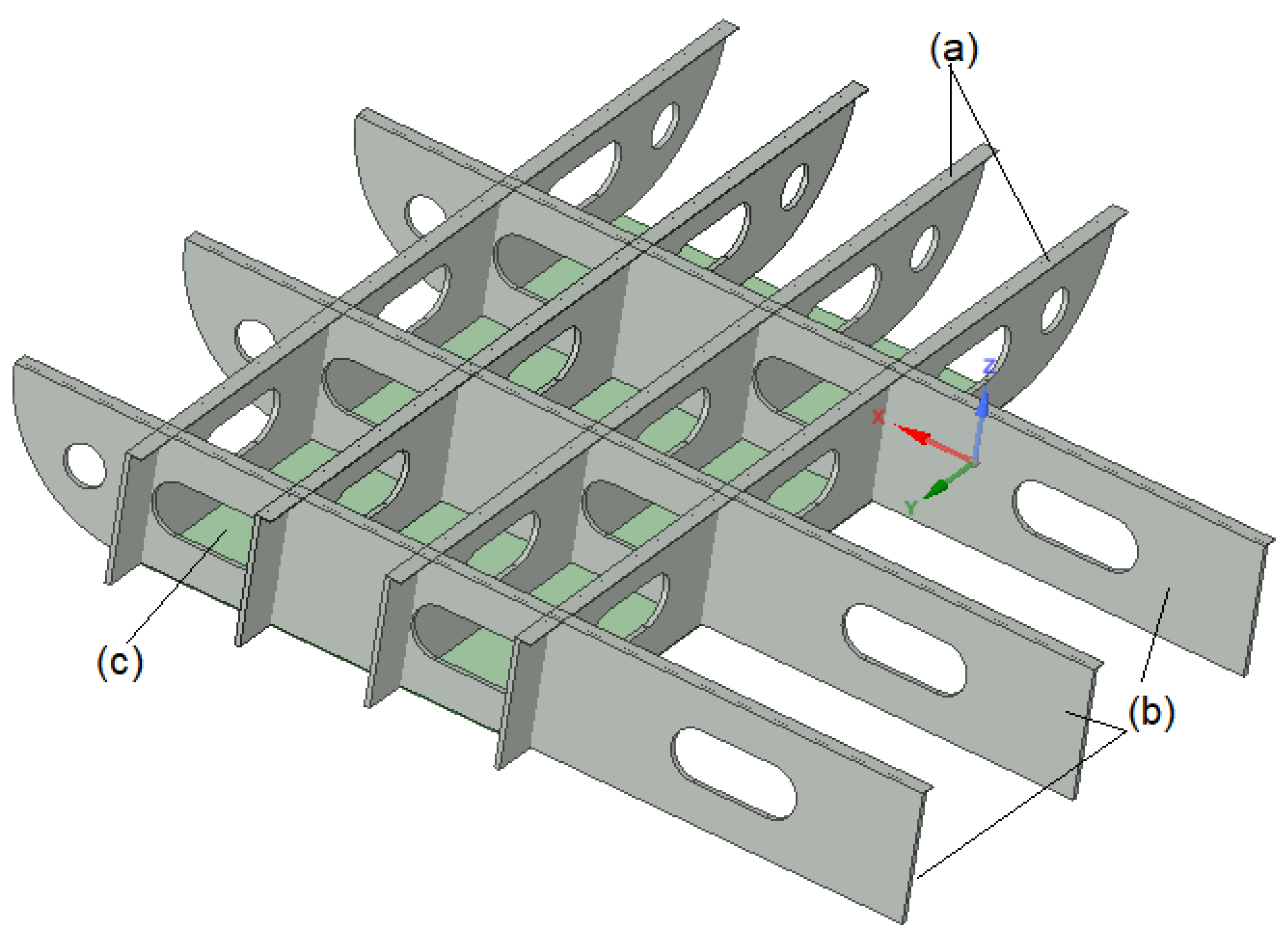

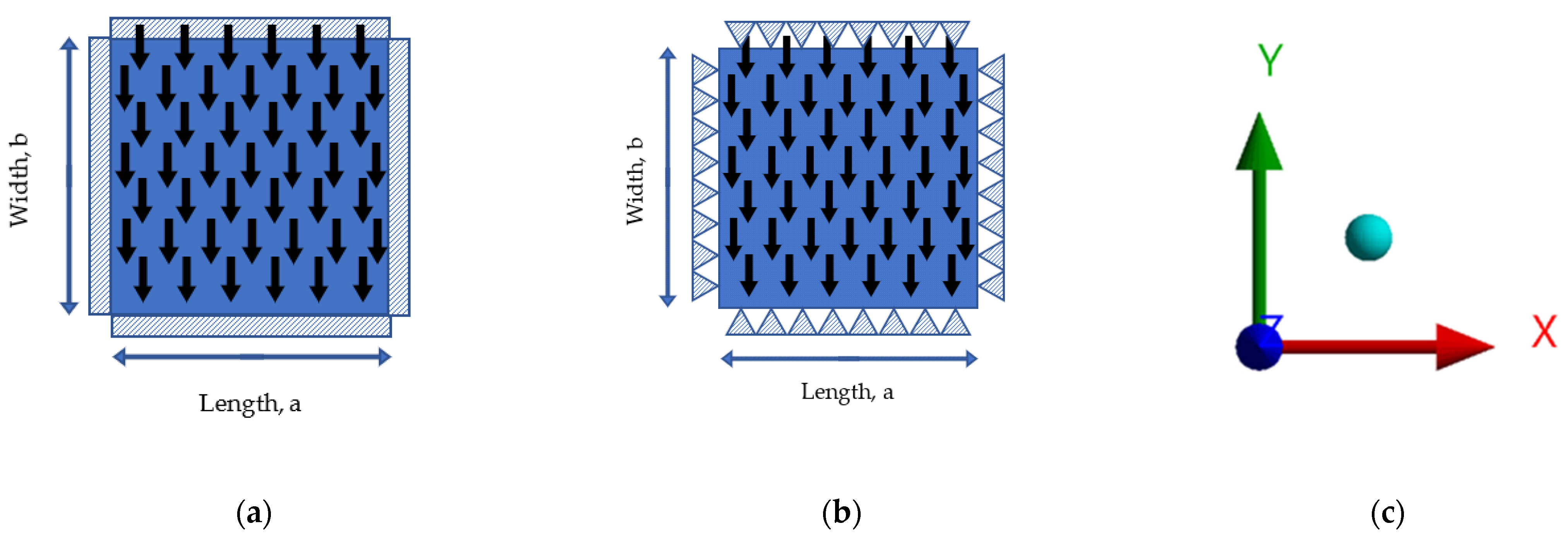

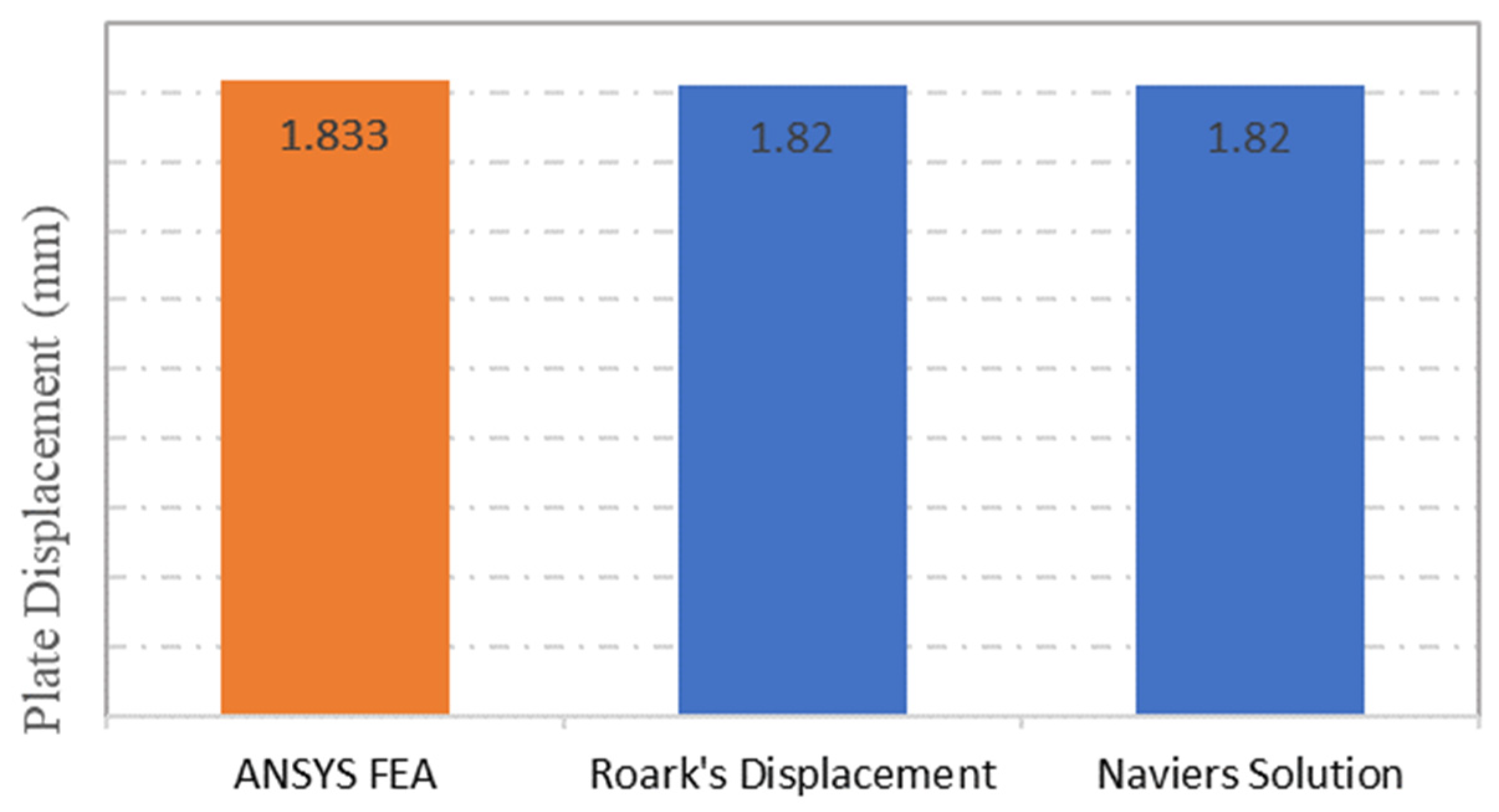

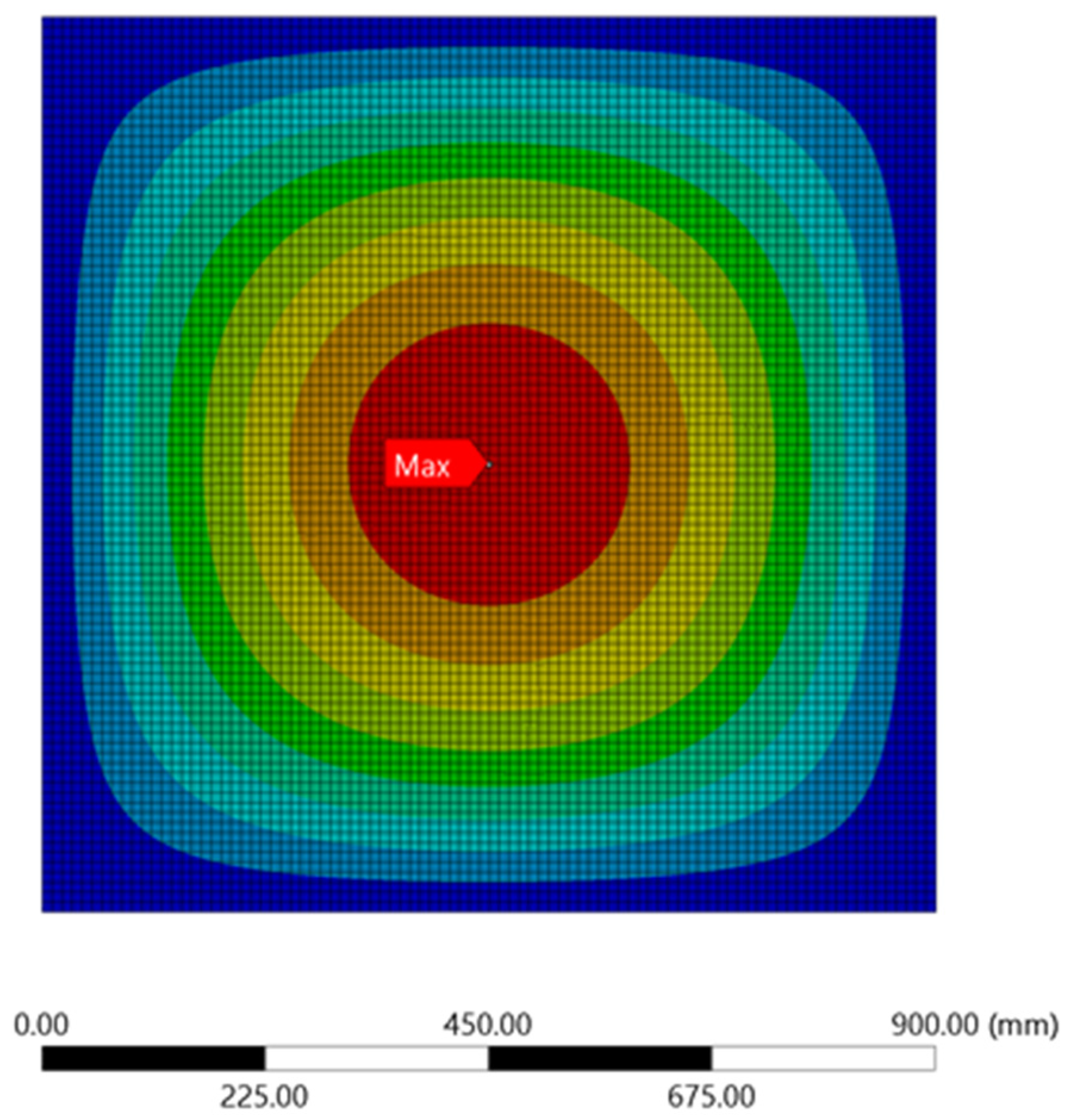
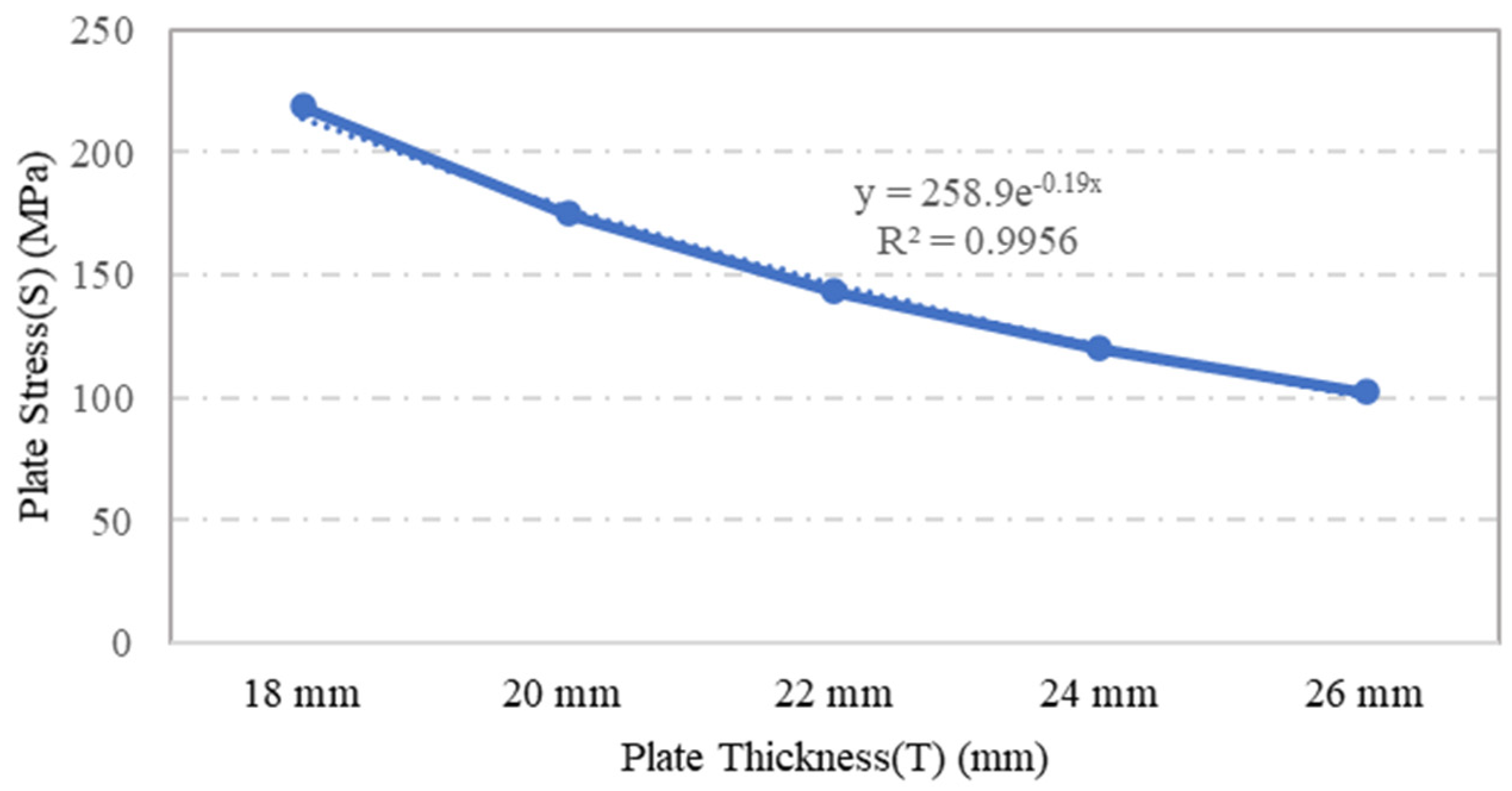
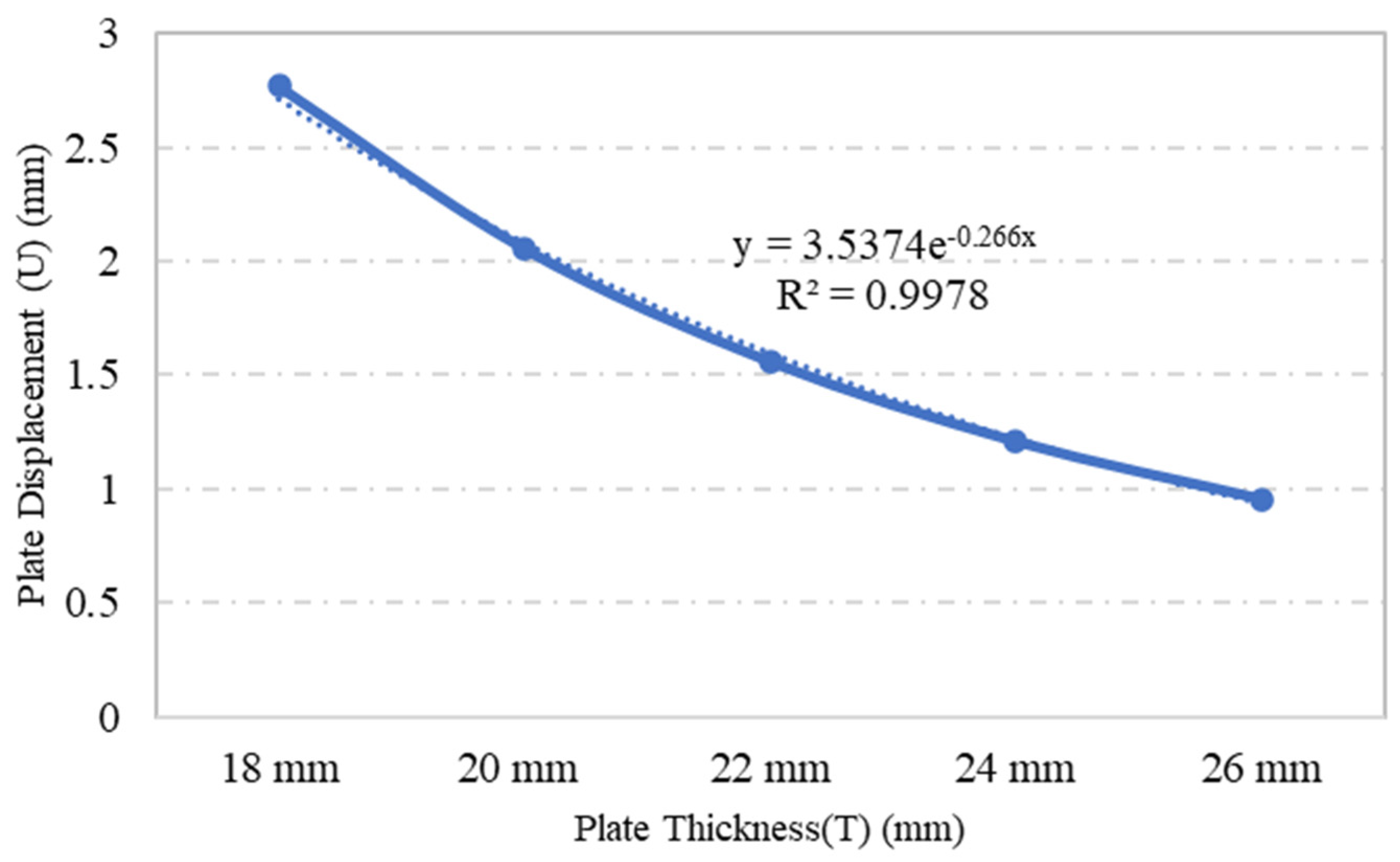


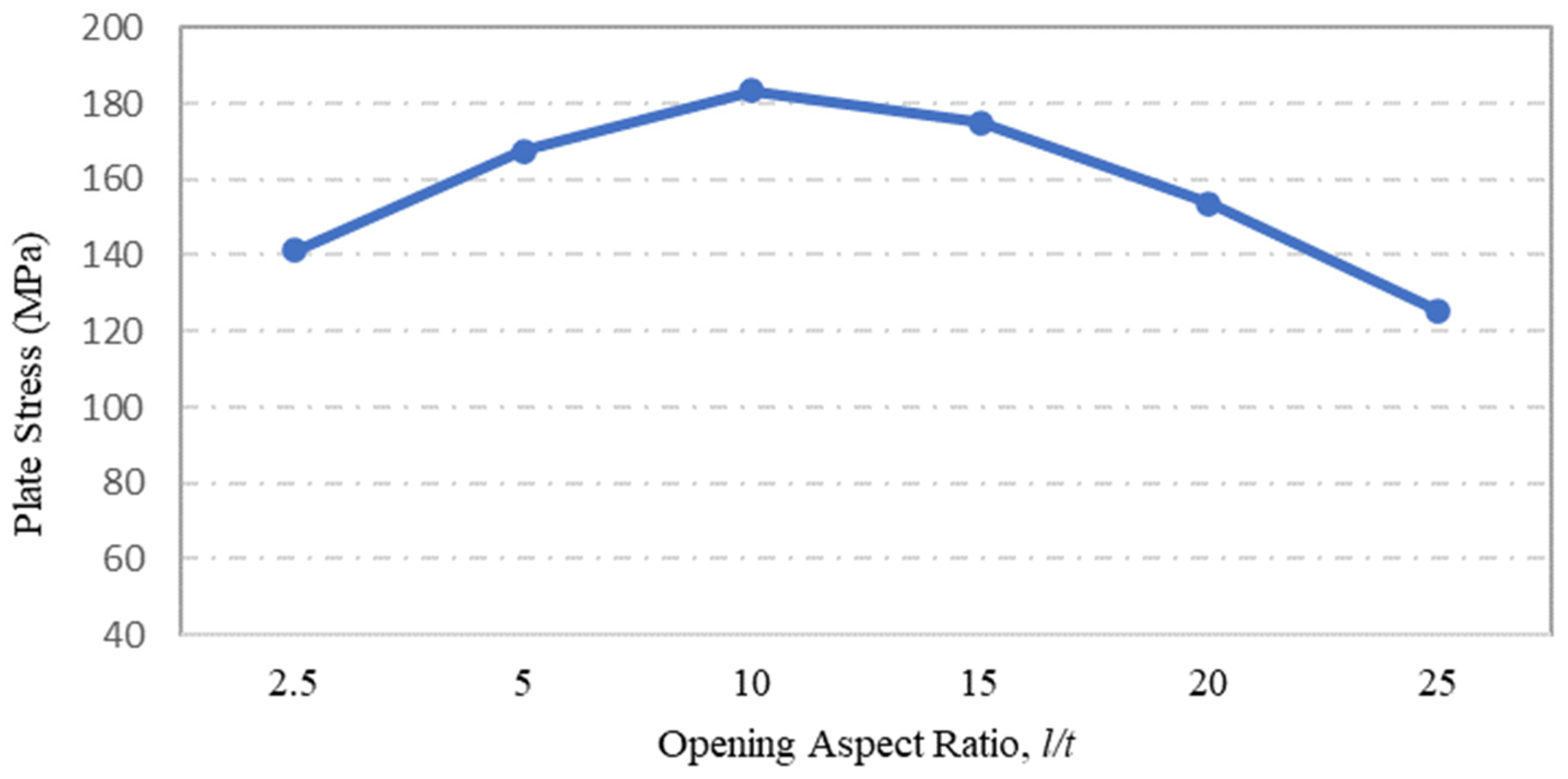

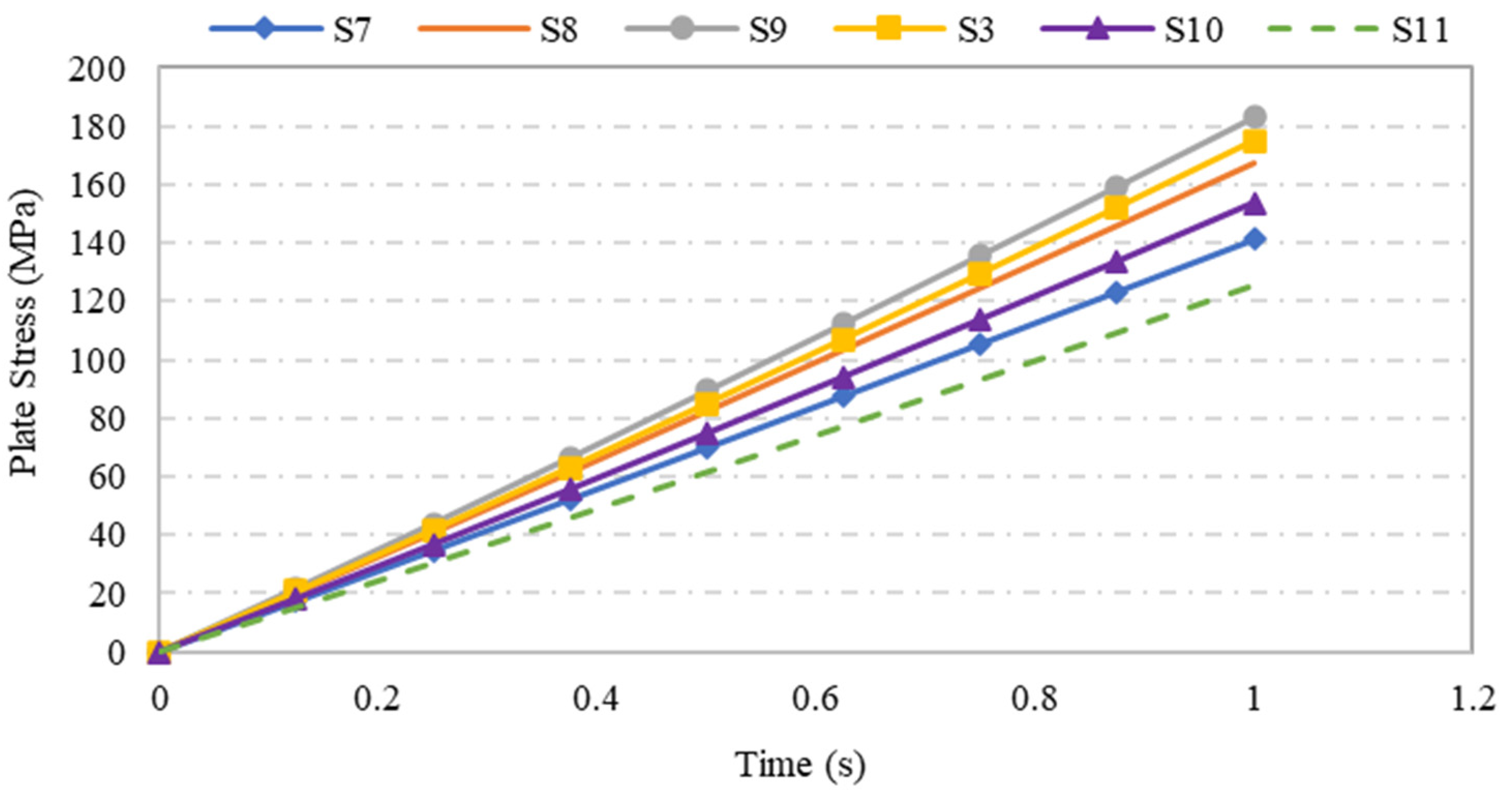
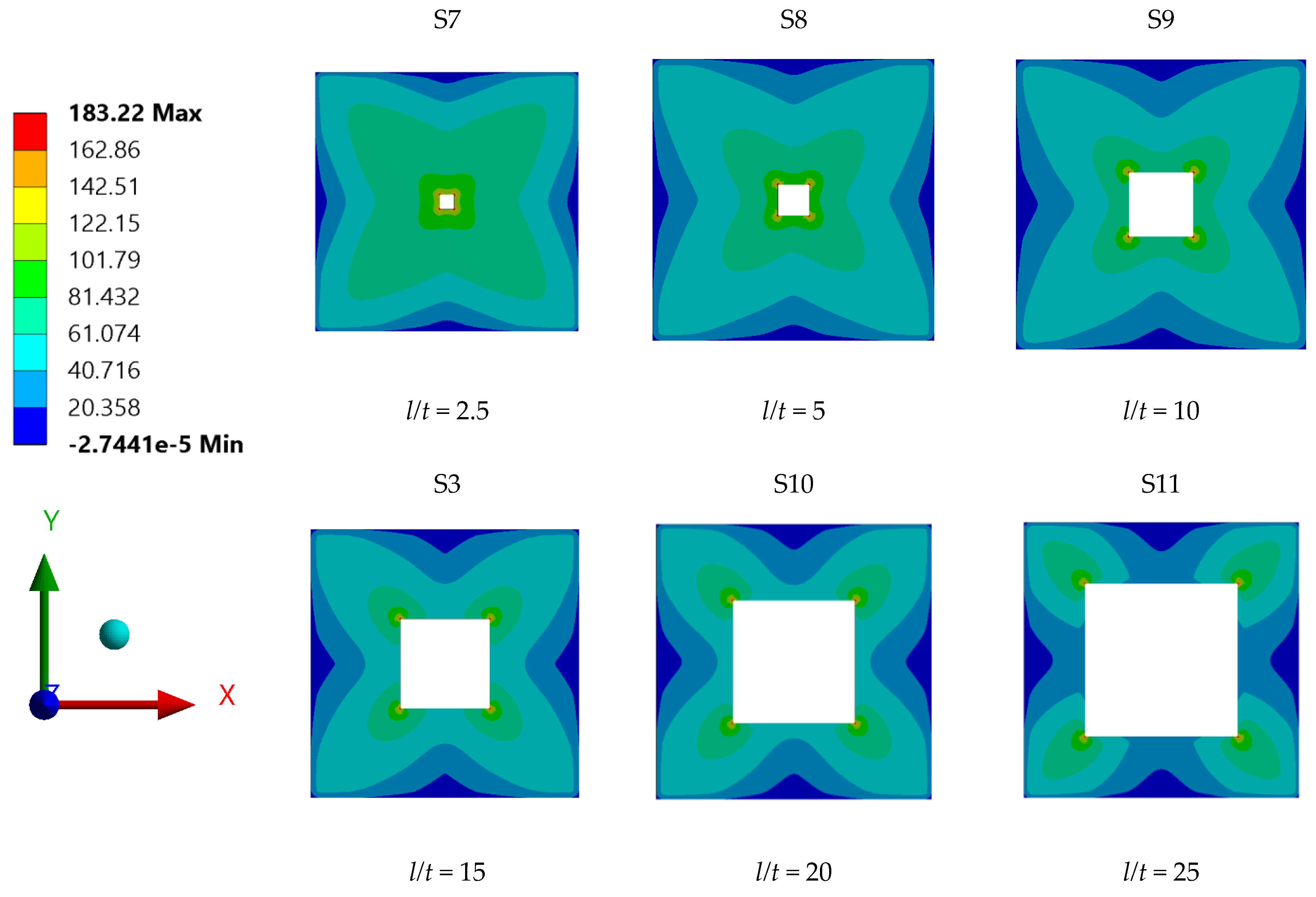

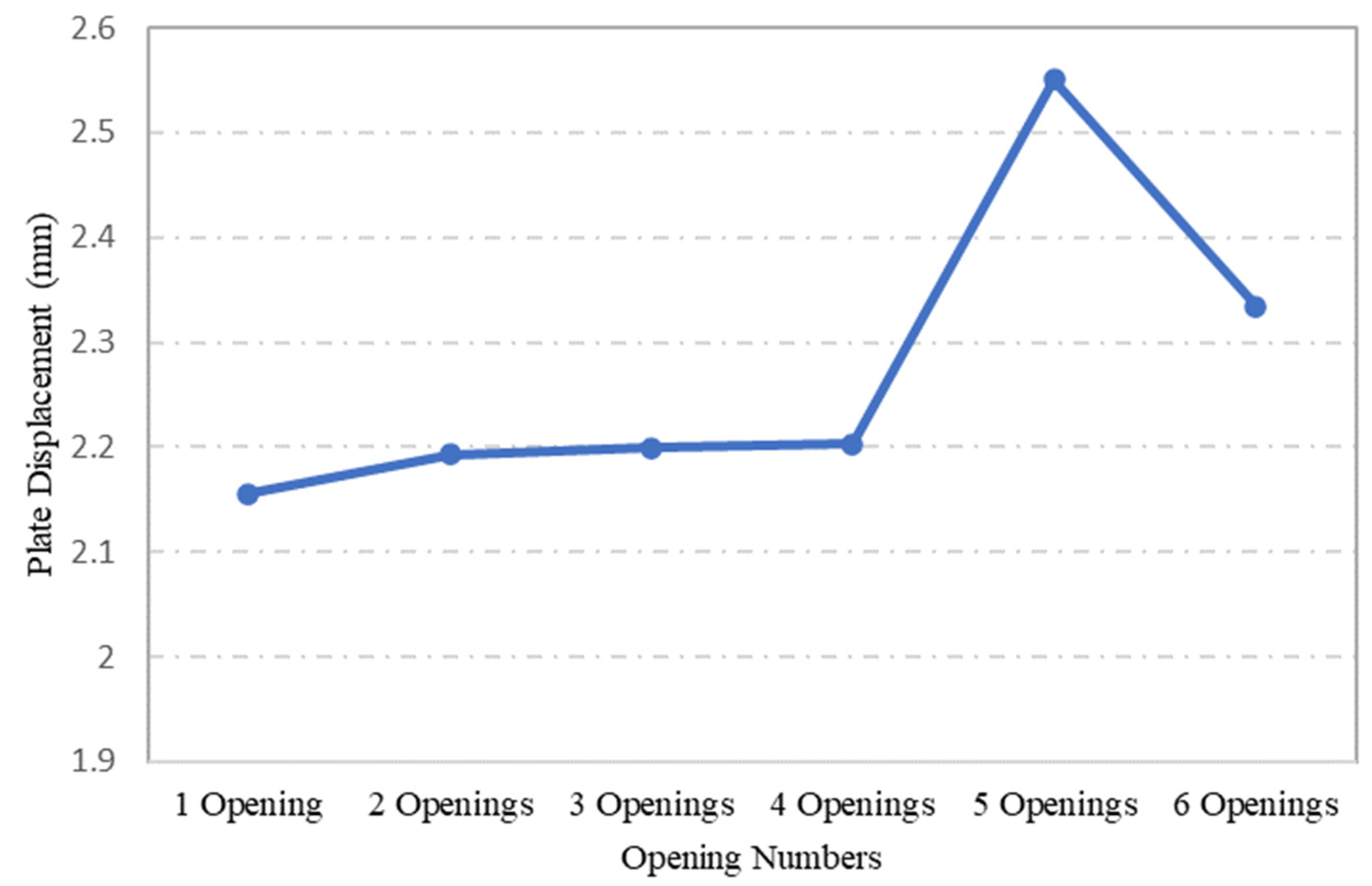
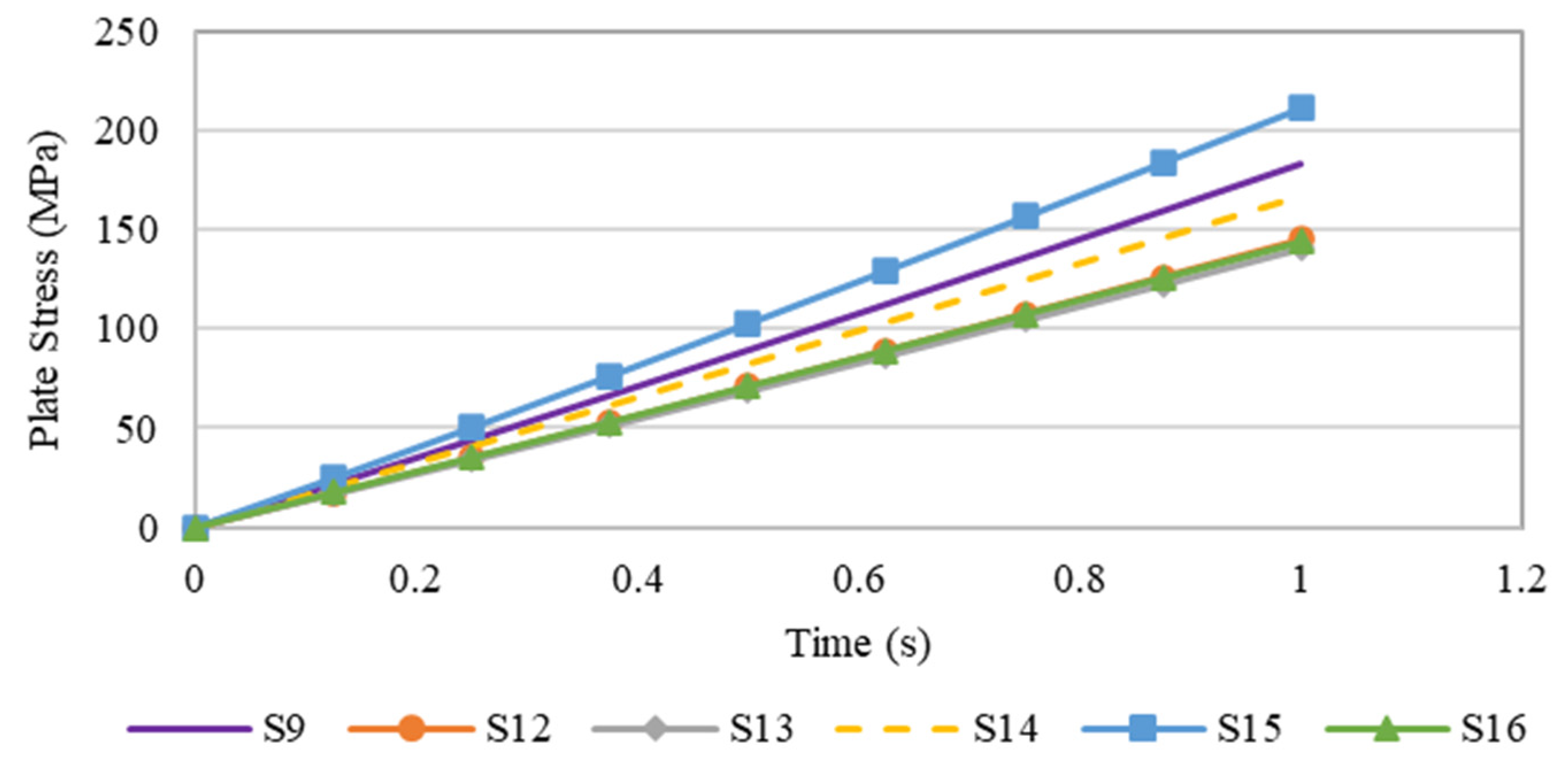

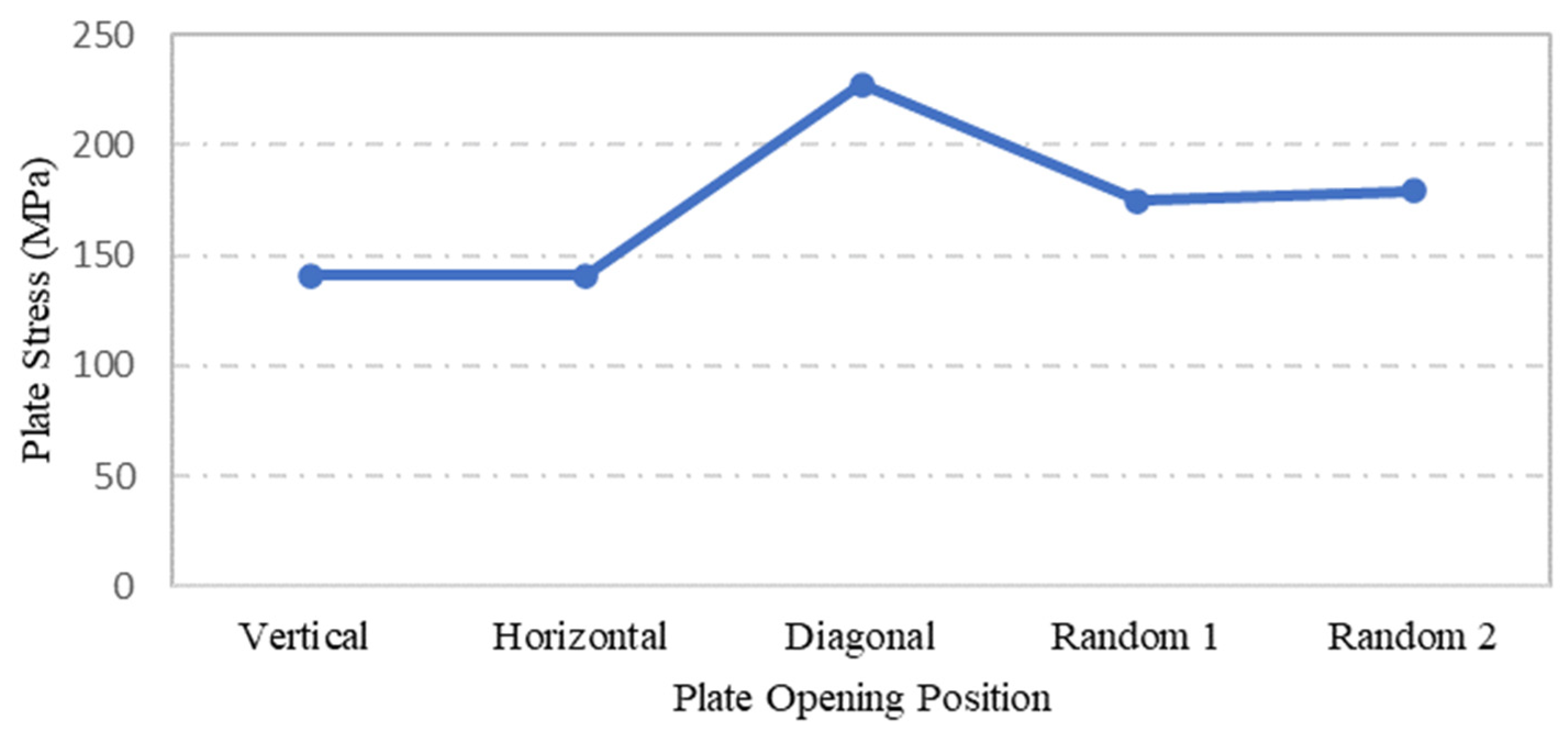
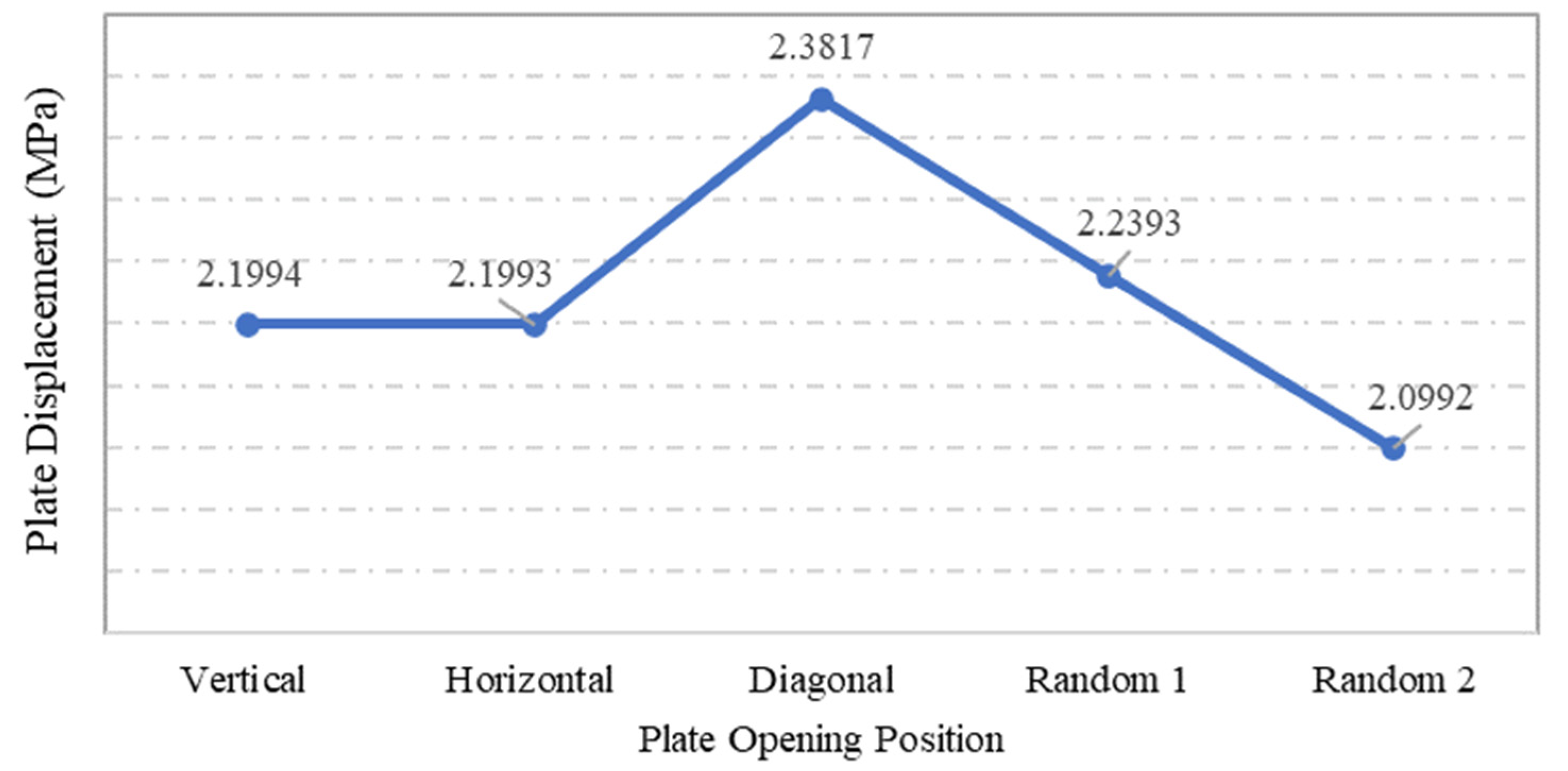
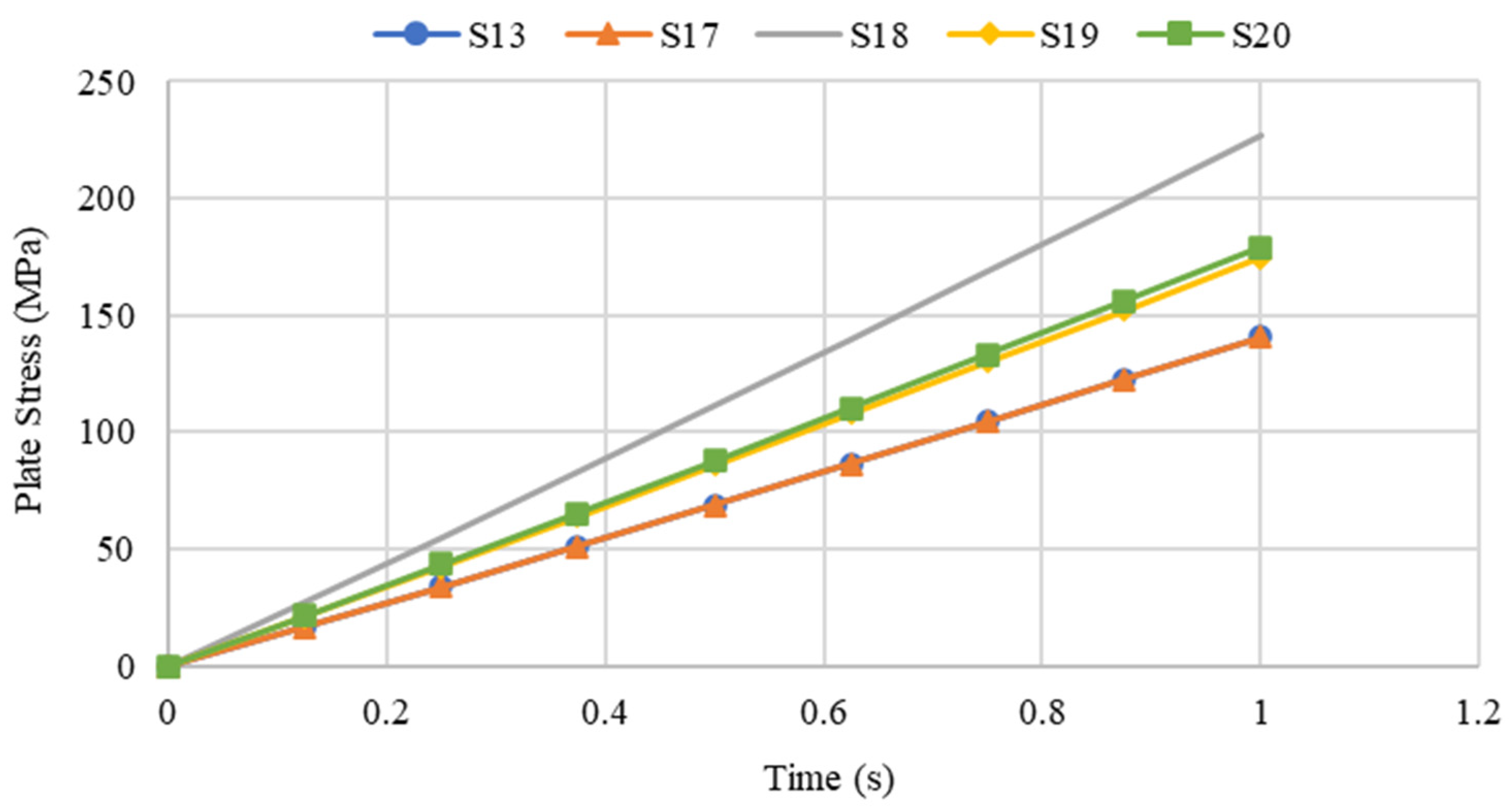
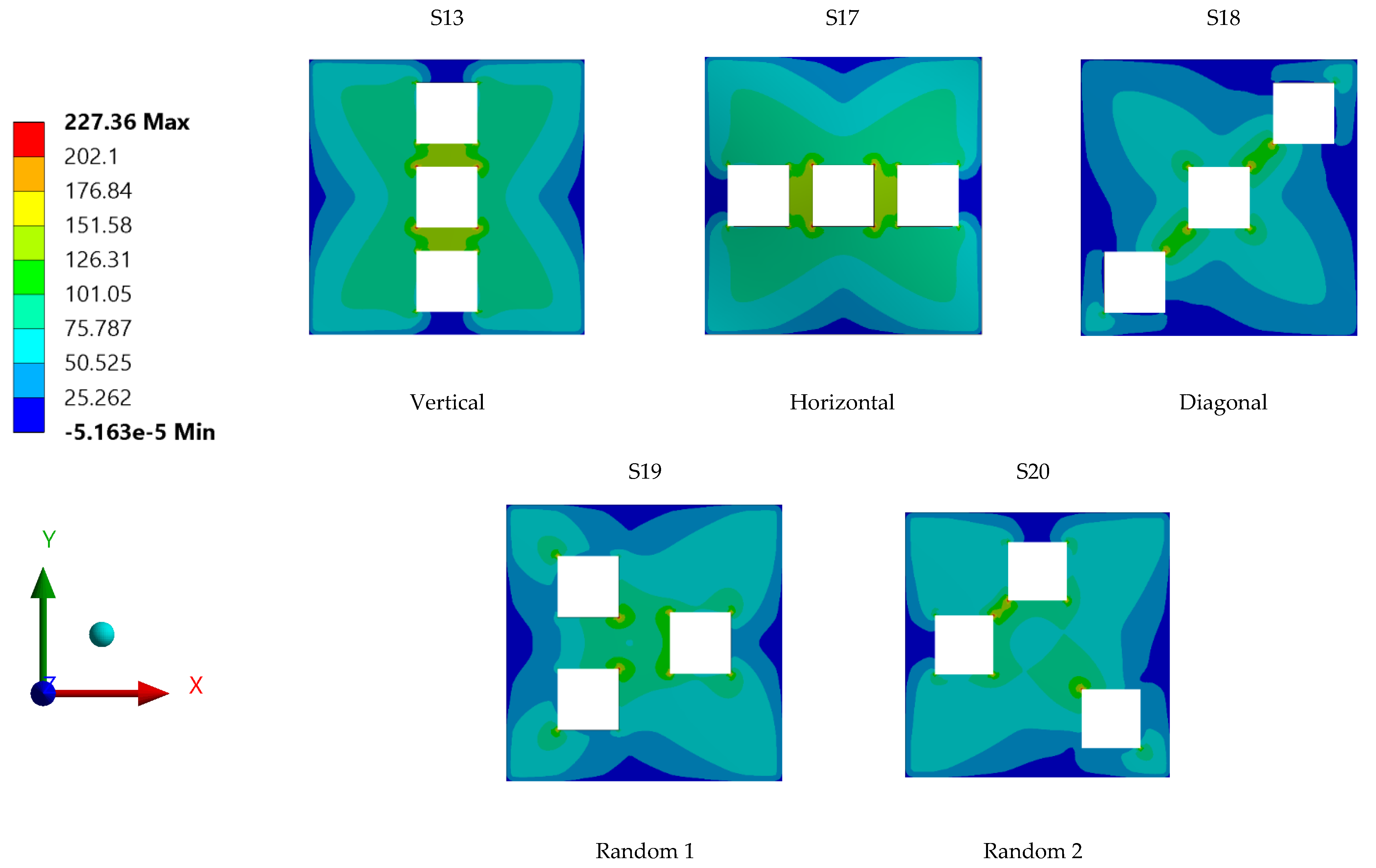
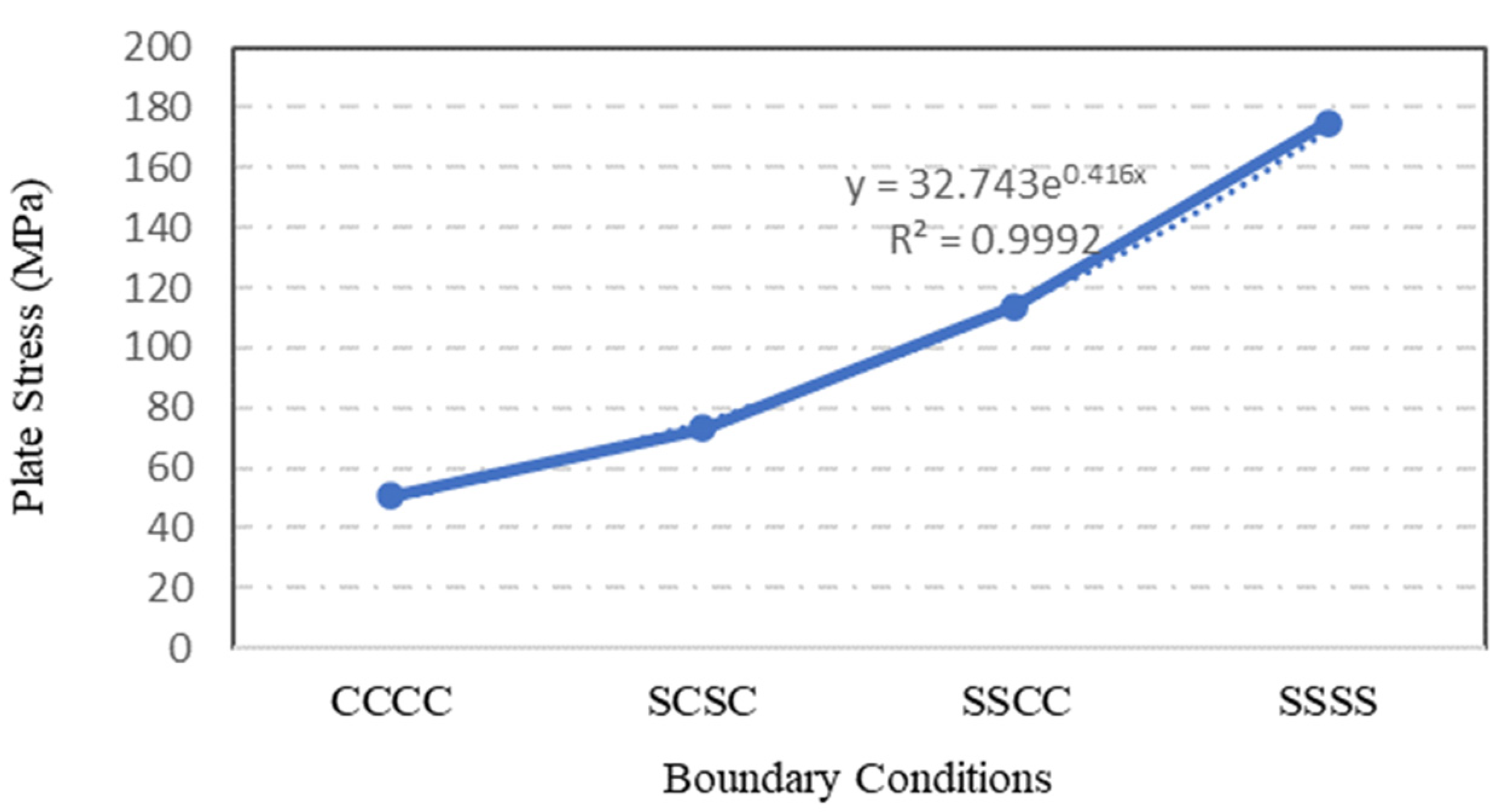

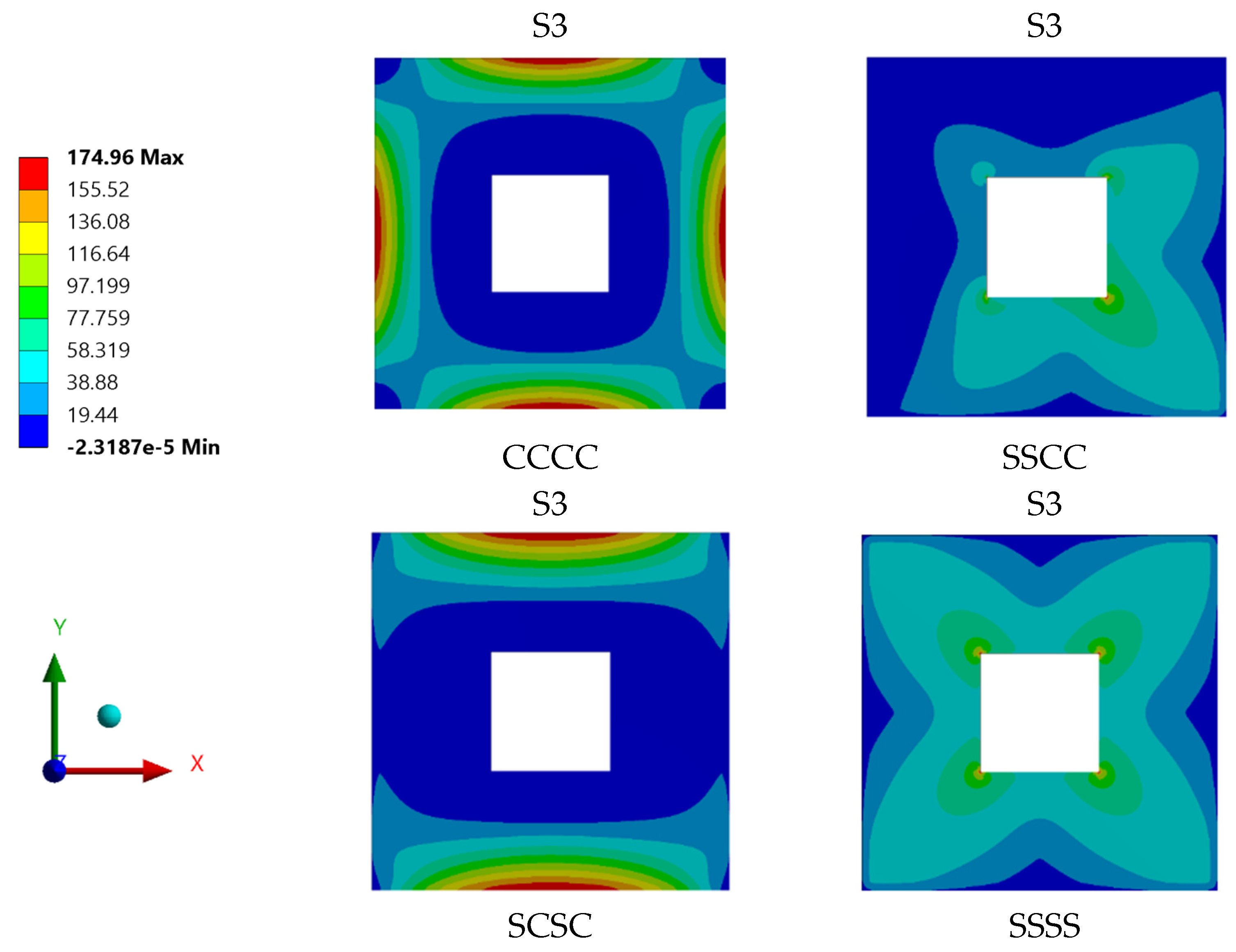
| Specimen No. | Opening Shape | Opening Dimensions | Plate Thickness | Opening Number |
|---|---|---|---|---|
| S-1 | - | - | 20.0 | - |
| S-2 | Rectangular | 300 × 300 | 18.0 | 1 |
| S-3 | Rectangular | 300 × 300 | 20.0 | 1 |
| S-4 | Rectangular | 300 × 300 | 22.0 | 1 |
| S-5 | Rectangular | 300 × 300 | 24.0 | 1 |
| S-6 | Rectangular | 300 × 300 | 26.0 | 1 |
| S-7 | Rectangular | 50 × 50 | 20.0 | 1 |
| S-8 | Rectangular | 100 × 100 | 20.0 | 1 |
| S-9 | Rectangular | 200 × 200 | 20.0 | 1 |
| S-10 | Rectangular | 400 × 400 | 20.0 | 1 |
| S-11 | Rectangular | 500 × 500 | 20.0 | 1 |
| S-12 | Rectangular | 200 × 200 | 20.0 | 2 |
| S-13 | Rectangular | 200 × 200 | 20.0 | 3 |
| S-14 | Rectangular | 200 × 200 | 20.0 | 4 |
| S-15 | Rectangular | 200 × 200 | 20.0 | 5 |
| S-16 | Rectangular | 200 × 200 | 20.0 | 6 |
| S-17 | Rectangular | 200 × 200 | 20.0 | 3 |
| S-18 | Rectangular | 200 × 200 | 20.0 | 3 |
| S-19 | Rectangular | 200 × 200 | 20.0 | 3 |
| S-20 | Rectangular | 200 × 200 | 20.0 | 3 |
| Group Number | Specimen | Research Objectives |
|---|---|---|
| Group I | S-2, S-3, S-4, S-5, and S-6 | Influence of plate thickness on ultimate strength |
| Group II | S-3, S-7, S-8, S-9, S-10, and S-11 | Influence of opening aspect ratio on ultimate strength |
| Group III | S-9, S-12, S-13, S-14, S-15, and S-16 | Influence of opening numbers on ultimate strength |
| Group IV | S-13, S-17, S-18, S-19, and S-20 | Influence of opening position on ultimate strength |
| Group V | S-3 (All edges simply supported), S-3 (All edges clamped), S-3 (CSCS) and S-3 (SSCC) | Influence of boundary conditions on ultimate strength |
| Plate Specimen | Opening Position | Max Stress (MPa) | Max Displacement |
|---|---|---|---|
| S13 | Vertical | 140.8 | 2.1994 |
| S17 | Horizontal | 140.8 | 2.1993 |
| S18 | Diagonal | 227.36 | 2.3817 |
| S19 | Random 1 | 174.76 | 2.2393 |
| S20 | Random 2 | 179.26 | 2.0992 |
| Plate Parameters | Optimum Values |
|---|---|
| Geometry | 900 × 900 mm |
| Thickness | 26 mm |
| Opening Aspect Ratio | 50 × 50 mm |
| Number of Opening | 1 Openings |
| Opening Position | Plate Centre |
| Boundary Conditions | Simply Supported |
| Optimized Steel Plate with Rectangular Hole | |||
|---|---|---|---|
| Time | Applied Pressure (MPa) | Max Stress (MPa) | Max Displacement |
| 0 | 0 | 0 | 0 |
| 0.125 | 0.0125 | 10.389 | 0.11053 |
| 0.25 | 0.025 | 20.818 | 0.22104 |
| 0.375 | 0.0375 | 31.283 | 0.33152 |
| 0.5 | 0.05 | 41.784 | 0.44195 |
| 0.625 | 0.0625 | 52.319 | 0.55231 |
| 0.75 | 0.075 | 62.886 | 0.66259 |
| 0.875 | 0.0875 | 73.482 | 0.77276 |
| 1 | 0.1 | 84.107 | 0.88283 |
Publisher’s Note: MDPI stays neutral with regard to jurisdictional claims in published maps and institutional affiliations. |
© 2022 by the authors. Licensee MDPI, Basel, Switzerland. This article is an open access article distributed under the terms and conditions of the Creative Commons Attribution (CC BY) license (https://creativecommons.org/licenses/by/4.0/).
Share and Cite
Al-Yacouby, A.M.; Mazli, A.A.; Liew, M.S.; Ratnayake, R.M.C.; Samarakoon, S.M.K. Finite Element Analysis of Steel Plates with Rectangular Openings Subjected to Axial Stress. Materials 2022, 15, 4421. https://doi.org/10.3390/ma15134421
Al-Yacouby AM, Mazli AA, Liew MS, Ratnayake RMC, Samarakoon SMK. Finite Element Analysis of Steel Plates with Rectangular Openings Subjected to Axial Stress. Materials. 2022; 15(13):4421. https://doi.org/10.3390/ma15134421
Chicago/Turabian StyleAl-Yacouby, Ahmad Mahamad, Arwie Amri Mazli, M. S. Liew, R. M. Chandima Ratnayake, and Samindi M. K. Samarakoon. 2022. "Finite Element Analysis of Steel Plates with Rectangular Openings Subjected to Axial Stress" Materials 15, no. 13: 4421. https://doi.org/10.3390/ma15134421







